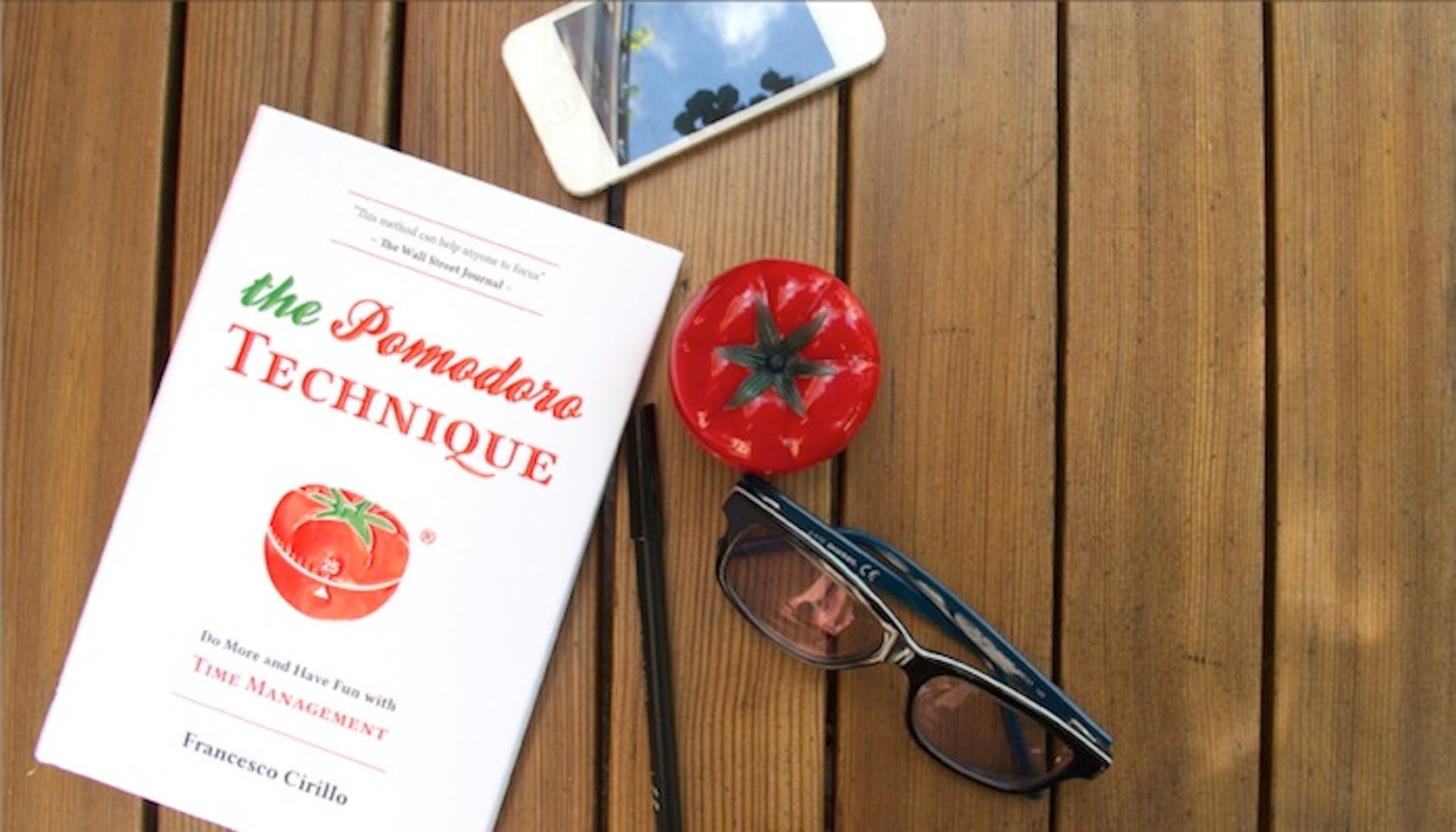How-To · October 26, 2015
The Pomodoro Technique: Can It Really Double Productivity?

Let's review the basics: Developed by Francesco Cirillo in the late 1980's, the Pomodoro Technique is a time-management method built on the notion that frequent breaks actually help you in the long run. The system can be broken into five simple steps:
1. Choose a task to complete: either a standalone job, or a piece of a larger project.
2. Set a timer for 25 minutes, either on your phone or on a special Pomodoro timer.
3. Spend the allotted time on that task, and only that taskno emails, chit-chat, or Facebook breaks.
4. Afterwards, take a 3-5 minute break (get some coffee, take a short walk, etc.).
5. After completing four of these cycles, take a longer 15-30 minute break.
In theory, the frequent breaks help your brain reboot and stave off work fatigue, making you less likely to procrastinateor to waste precious time when you're stuck on a problem. To see how dramatic a change it can be, I decided to spend one workday using the Pomodoro Technique, as opposed to my regular "go with the flow" approach. Here's what I found:
Yes, You Will Get More Work Done
First, let's get this out of the way: I completed more tasks on my Pomodoro day than on any other workday, period. I not only procrastinated less, but was more driven to complete each task within a reasonable time frame (no more hours of denial and writer's block). As for emails, well, they deserve a point all its own...
Emails Are the Devil
Under normal circumstances, I keep my Gmail inbox open at all times, and immediately check it when an email comes in. After one day of Pomodoros, I realized just how much time this wasted, not because of the time spent reading each email, but because of how long it takes to reacclimate yourself to the task you were previously doing, and to get yourself back on track.
It Works Better for Creative Tasks
One of the main benefits of the Pomodoro Technique is that it streamlines both brainstorming and problem-solving, since you're no longer tempted to dive down a rabbit hole that consumes precious hours of the day. Because of this, Pomodoros have a greater effect on roles that involve creative thinking and multiple potential solutions, rather than mindless or monotonous tasks like data entry.
It Also Works Best for Varied To-Do Lists
Pomodoros are ideal when you're facing a variety of smaller tasks, rather than a single exhaustive one (like a complex illustration). The method will help you stay focused, sure, but it's in the effective prioritization of time (not getting hung up on one small step) that Pomodoros really shine.
You Have to Be Flexible
Many Pomodoro devotees adhere to the rules quite strictly, as deviation can be a slippery slope. However, in my experience, I found that true efficiency required me to be flexible: If I had 20 minutes before a meeting, I'd rather undergo a shorter cycle than forgo one entirely. Similarly, if a larger task could be completed in five Pomodoro cycles instead of four, I'd prefer to add a cycle before taking my 30-minute break, just to keep the momentum going.
There's A Learning Curve
Ultimately, while I did see tangible results in a day, the Pomodoro Technique works best as a lifestyle, not a hack. It takes a few days to get the hang of it, and a week or more to embrace it completely, so don't get discouraged if your first day doesn't go as planned. Just rewind your timer and keep on ticking.

Nathaniel Nagy
Copywriter, cold brew advocate, purveyor of handcrafted birthday haikus since 2009.